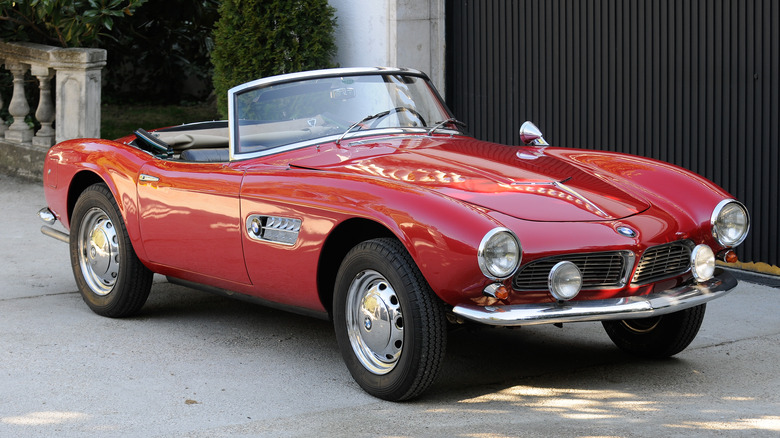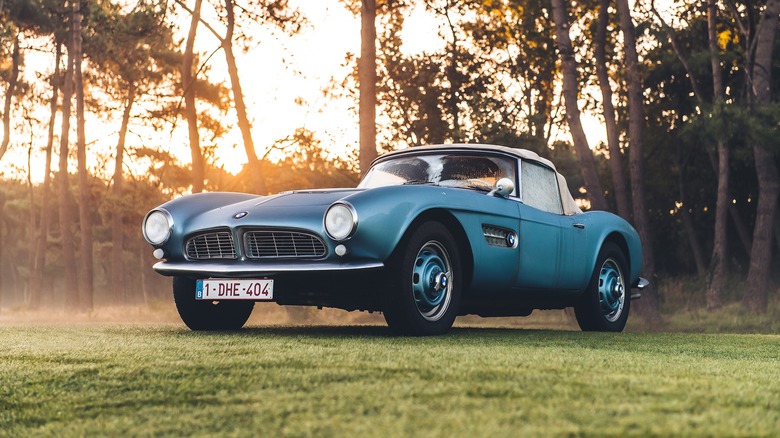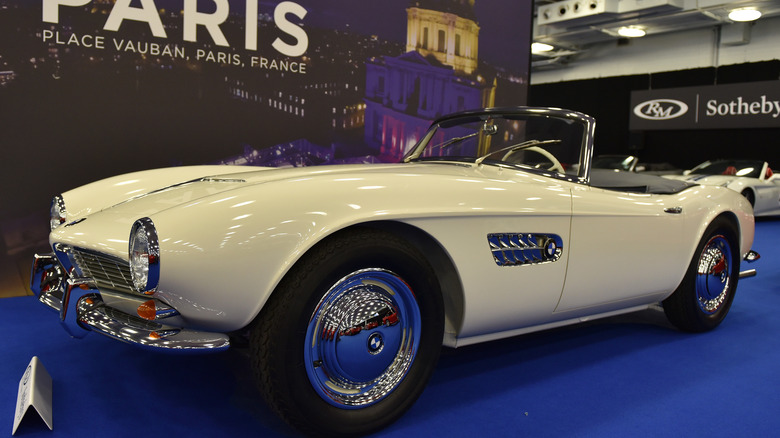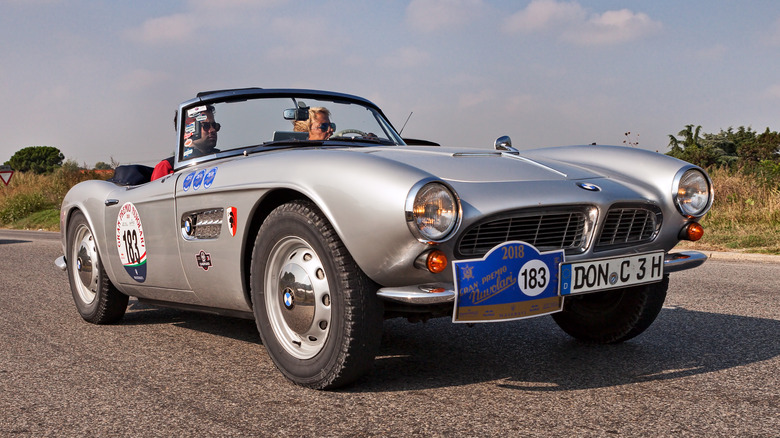The Classic BMW Roadster With Unmistakable Elegance
The iconic BMW 507 Roadster is frequently mentioned as one of the best and rarest production vehicles in the German automaker's history. BMW enthusiasts also call it the prettiest car to wear the German propeller badge, and that sentiment remains steadfast in the face of modern BMWs and the snorty front ends. The 507 was (and is still) the BMW dream car that celebrities like Elvis Presley, Bernie Ecclestone, and Fred Astaire found hard to resist.
Production for the BMW 507 ran from 1956 to 1960, and the carmaker only sold 252 units after initially projecting to sell 5,500 units annually to American buyers leading into the '60s. The car was too expensive during its heyday, making it out of reach for most sports car buyers in the late '50s. What's worse is it almost led to BMW's bankruptcy due to sky-high production costs and slim margins that the company never recuperated.
BMW 507 Roadster: Making a grand entrance
Based on the underpinnings of BMW's 501 and 503 luxury cars from the early '50s, BMW conceived the 507 under circumstances similar to the legendary Mercedes-Benz 300SL Gullwing. The common denominator is New York-based luxury car importer Max Hoffman, who first convinced Mercedes-Benz to make a road-based 300SL for American roads.
Then, given Hoffman's reputation, the BMW brass went to work and hired Albrecht von Goertz to design a sports car that would make Americans forget the Porsches, MGs, and Mercedes-Benzes dominating state highways. Hoffman knew Americans love big, thirsty V8 engines, so he insisted the 507 should have no less than a V8. BMW obliged with the carmaker's first-ever production V8 engine — a naturally-aspirated 3.2-liter powerhouse with 150 horsepower.
The 507's V8 engine has overhead valves, polished ports, high-lift camshafts, racing-tuned ignition, and a 7.8:1 compression ratio. Suspending the car on all fours is a double-wishbone front axle and a live axle rear with front & rear anti-roll bars and Alfin drum brakes (later models received Girling disc brakes).
Curvy dimensions
It takes fancy designed body panels to impress the King of Rock and Roll, and we all know Elvis had a penchant for American Cadillacs and their space-age designs. Nevertheless, the BMW 507 remains the epitome of a vintage-style roadster that will never fail to turn heads on the road. Each aluminum body panel was handmade, meaning no two 507s were identical. It also has a long nose, a shorter front overhang, and a 2,930-pound curb weight — all desirable traits of a grand touring sports car.
Moreover, the BMW 507 came with a convertible soft-top roof, but according to Motor Trend, 11 of the 252 units sold came with a detachable hardtop roof. In addition, roughly 34 units were Series 1 models, and the remaining 218 were Series II. The 507's defining characteristic is those horizontal front "kidney" grilles that inspired modern Z cars like the Z3, Z4, and Z8.
More expensive than sin
Max Hoffman intended to sell the all-new BMW 507 at about $5,000 MSRP — a few thousand less than the Mercedes 300 SL Gullwing. However, the handmade quality led to a $10,500 base price instead, making it an unbelievable sum back in the day. As a result, BMW lost money for every 507 made, and the automaker was on the verge of bankruptcy by 1959.
However, a fresh infusion of capital enabled BMW to develop the Neue Klasse 1500, a car that cemented BMW's sporting lineage and ensured the carmaker's solvency through the 1960s. The BMW 507 roadster never lived up to the hype of being "Munich's dream car," but its limited production run has led to a steady rise in market value.
According to Classic.com, the average price for a BMW 507 is around $2.1 million, making it a highly collectible vintage BMW. Since BMW built so few of them, the prices are expected to rise above $3 million for a mint example.



